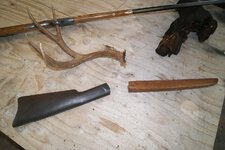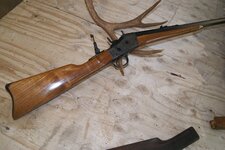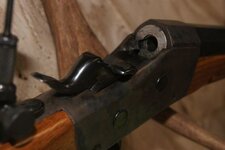Silver Supporter
- Messages
- 6,072
- Reactions
- 15,023
So when I had my old Remington rolling block rifle restored to shooting condition the rifle maker and I decided that in order to save the 28" tapered octagon barrel we would install a barrel liner. That allowed us to chamber the rifle for .38 spc/.357 mag and not throw away a beautiful old barrel.
I recently thought about acquiring another Remington #1 rolling block sporter with a corroded and pitted barrel, lining it, and chambering it for .45-70. Since the guy who did the restoration work on my rifle has since passed away, I inquired around locally about anyone who could install a liner in an old corroded barrel. One of the replies I got indicated that they wouldn't touch that kind of work and doubted that anybody else would. I got the impression that the guy on the other end of the call took a dim view of lining barrels. My understanding from a master gun maker and a guy who built rifles from scratch was that it was a perfectly safe and reasonable solution to the desire to keep an antique barrel that was shot out or corroded. What's the deal? Does anybody know? And BTW, I scratched the guy who gave me the condescending answer off my list of people I'll ever do business with.
I recently thought about acquiring another Remington #1 rolling block sporter with a corroded and pitted barrel, lining it, and chambering it for .45-70. Since the guy who did the restoration work on my rifle has since passed away, I inquired around locally about anyone who could install a liner in an old corroded barrel. One of the replies I got indicated that they wouldn't touch that kind of work and doubted that anybody else would. I got the impression that the guy on the other end of the call took a dim view of lining barrels. My understanding from a master gun maker and a guy who built rifles from scratch was that it was a perfectly safe and reasonable solution to the desire to keep an antique barrel that was shot out or corroded. What's the deal? Does anybody know? And BTW, I scratched the guy who gave me the condescending answer off my list of people I'll ever do business with.
Last Edited:
















